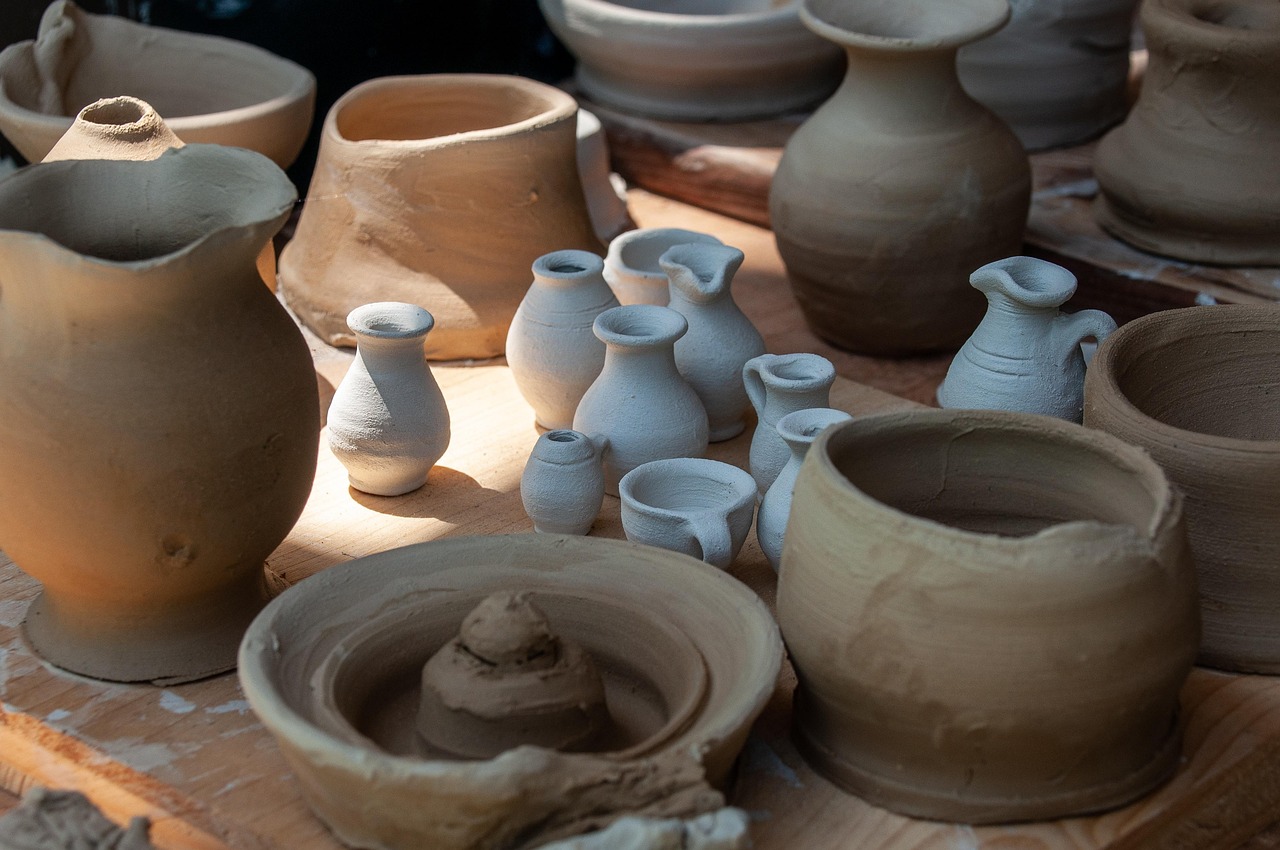A buried clay olla can cut garden water use by 50–70% in dry climates, while a smothered firing perfected by Pueblo artists yields a deep black, glaze-free sheen that modern collectors still prize. These concrete, measurable outcomes hint at the breadth of modern uses of Native American pottery techniques: energy-light production, durable cookware, passive cooling, and materials research rooted in centuries of experimentation.
If you want a practical view of how these methods translate today, here’s a clear map: what the core techniques do mechanically, how they perform in kitchens and gardens, how studios and engineers adapt them, and where the constraints and ethics lie.
What The Techniques Do: Methods And Mechanisms
Coil-and-scrape and paddle-and-anvil methods are not quaint; they are structural engineering by hand. Coils (often 10–20 mm thick as laid) are compressed into walls typically finished at 6–12 mm for cooking pots, aligning clay platelets and closing seams. Paddling against an internal anvil compacts and thins walls while improving hoop strength useful for large water jars that must resist sloshing loads and impact.
Temper the non-plastic inclusions mixed into clay controls shrinkage, permeability, and thermal shock. Grog (crushed fired clay), sand, and crushed shell are common. Coarse temper interrupts crack propagation, cuts drying stress, and can lower effective shrinkage by a few percentage points relative to untempered bodies. Shell temper, found widely in the Eastern Woodlands, alters the pore network and firing behavior; above roughly 750–800°C it can decarbonate, so firing schedules matter.
Finishes are functional: slips (refined clays) and burnishing reduce open porosity and increase strength without glaze. A well-burnished earthenware can show noticeably lower water absorption than an unburnished counterpart, enough to improve water storage and reduce staining. Reduction-smothering restricting oxygen late in the firing with dung, sawdust, or sherd covers drives carbon into the surface, producing blackware without hazardous additives.
Maria and Julian Martinez (San Ildefonso Pueblo) demonstrated in the 20th century that controlled, smothered firing creates deep black surfaces with matte–gloss contrasts using only clay, slip, polish, and reduction.
Firing routes trade control for energy. Open pits or trench firings commonly reach 600–900°C with steep gradients; within a single firing, some pots may see a ±100–200°C swing. That variability can increase breakage if moisture remains or if thick sections heat unevenly. Yet the approach needs no grid electricity and allows large forms that would be costly in kilns, making it attractive for community-scale production.
Functional Uses Today: Kitchens, Water, And Soil
Micaceous-clay cookware from northern New Mexico and southern Colorado Pueblos remains a workhorse for beans and stews. Mica platelets act like tiny heat mirrors and micro-springs: they slow heat flow, distribute it more evenly than many thin metal pans, and tolerate moderate thermal shock. To modernize usage, slowly preheat with water or a wet mash, use a heat diffuser on electric or glass tops, and avoid empty high-heat starts. The result is a steady simmer without hot spots and a pot that stays warm on the table.
Porous water jars deliver off-grid cooling by evaporation: water seeps microscopically through the wall and evaporates from the exterior, pulling heat from the remainder. In dry air (relative humidity under ~40%), expect water inside to sit roughly 2–6°C cooler than ambient if the jar is shaded and ventilated. That modest drop extends the freshness window of produce by a day or more without refrigeration and costs nothing but periodic cleaning with a stiff brush and baking soda.
Olla irrigation documented in arid Indigenous farming across the Southwest and elsewhere has a clear revival in home gardens. A 3–10 liter unglazed pot is buried to its neck near plant roots and refilled every 2–7 days; moisture moves through micro-pores only when surrounding soil is drier than the pot interior, so overwatering is hard. In loamy beds, one medium olla can wet roughly a 0.5–1 meter diameter area. Gardeners in semi-arid zones routinely report 50–70% less water use than sprinkler or surface hose methods, with less weed pressure between rows.
Unglazed earthenware can also serve fermentation and pantry storage. Slight permeability allows CO2 to vent while limiting oxygen spikes useful for pickles or sourdough though evidence on flavor differences vs glass is mixed and mostly anecdotal. Food-safety basics still apply: avoid unknown glazes, keep acids in contact only with known lead-free surfaces, and scrub salt deposits that can harbor biofilms.
Studio And Industrial Adaptations: From Hand Coils To Toolpaths
Clay 3D printing echoes coil-building, but the old fixes still matter. Layer lines are weak planes unless compressed; studio printers can add pauses to rib or lightly paddle green walls, mimicking hand compaction that aligns platelets and fuses seams. The same logic applies to large thrown forms: when in doubt, compress. Where reduction blackware is desired without a pit, potters use saggers packed with organics or run low-oxygen cycles in gas kilns to replicate smothered conditions.
Temper engineering translates cleanly. For thermal-shock-tolerant ware (cookware, kiln furniture prototypes), grog in the 20–40 mesh range at 10–25% by volume is a practical starting band; it reduces drying cracks and helps parts survive uneven heating. Shell temper, historically common in Mississippian pottery, can be explored cautiously: it changes fluxing and porosity, and if underfired may rehydrate over time. Many modern makers substitute calcined shell or stick with grog for consistency.
Energy and yield impose real constraints. An electric kiln of about 7 cubic feet typically draws on the order of 30–60 kWh for a bisque to around cone 04, a predictable, repeatable profile. Pit firings instead leverage scrap wood, dung, or crop residues; they are low-cost but variable, and beginners often see 10–30% loss until drying and stacking are dialed in. A pragmatic hybrid is common: bisque in a kiln for stability, then open-fire for color and smoke patterns.
Constraints, Testing, And Cultural Respect
Food safety is non-negotiable. Many traditional vessels are unglazed earthenware and safe for water or simmering, but unknown glazes are a red flag. Use lead test swabs on thrifted or inherited pieces, especially those with bright, low-fire gloss. Blackware finishes achieved by reduction are not glazes; they are suitable for dry storage or serving but may be too porous for boiling unless specifically made as cookware. When in doubt, line with food-safe glaze or reserve for dry goods.
Porosity and care determine lifespan. Low-fired earthenware often absorbs 8–15% water by weight; saturation before heating cushions thermal gradients, and seasoning with starch or fat can seal micro-pores over time. Avoid sudden moves from cold soak to high flame. Do not use soap on seasoned micaceous cookware; rinse with hot water, wipe, dry thoroughly, and expect a useful life of dozens to hundreds of cycles if handled gently. Freezing can crack water-filled pores store dry.
Finally, technique is intertwined with living cultures. If you teach, sell, or publish work derived from Pueblo, Hopi, Acoma, or Eastern Woodlands traditions, credit the specific communities and avoid sacred motifs (for example, clan symbols or funerary designs like certain Mimbres iconography). The most direct way to support the tradition is to buy from Native artists, collaborate with clear agreements, and treat historical methods as starting points not a grab bag divorced from their makers.
Conclusion
Decide by function, not nostalgia: use micaceous or well-tempered earthenware for gentle cooking, bury porous ollas to target water to roots, burnish when you need low-porosity without glaze, and choose reduction only when the surface itself is the goal. Test for lead, pre-dry before any live fire, and credit the people whose methods you adapt. The payoff is real performance with modest energy and materials and respect intact.

